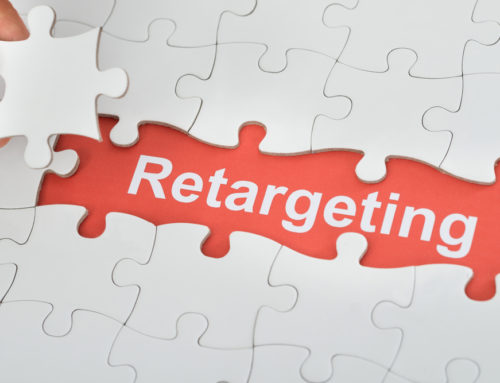Is social a key element of your demand generation strategy? If not, it needs to be. Contributor Will McInnes walks you through three ways to use social for demand generation.
I can’t be the only CMO focusing on and prioritizing the measurement of the real bottom line of all marketing team activities: demand generation. Yet there isn’t much mention or actual execution of leveraging social media listening for demand generation purposes — in any industry. With demand generation teams being the metrics-driven, data-loving departments that they are, social should be a prime member of their tactics. But it isn’t… yet.
Social media is a huge potential feeding ground for demand generation purposes. Below, I’ll reveal three ways to use social for a rarely mentioned use case: demand generation.
Growing your market demand
Social is the go-to forum for unsolicited, unabashedly detailed consumer feedback on products, services and overall brand reputation. Companies can utilize deep social listening and analytics to learn more about the experiences of their audience, both of current customers and potential new prospects. This can positively impact demand generation opportunities when it comes to researching and better understanding your industry’s current market landscape and consumers.
First, social intelligence and the consumer insights drawn from social data can inform marketing content, brand positioning, and even your product and company value propositions. How?
- By highlighting gaps in the market
- Revealing green field topics and consumer preferences
- Showing the vernacular and specific vocabulary consumers are using to describe you and your competitors
By leading with an audience-driven demand generation approach, you can really propel your company’s SEO and online visibility to make the most of new opportunities.
The best way to grow your market demand on social is to give the people what they want, and that means creating content and developing an online presence that really resonates with your customers and your target consumer base. Do this by:
- crafting reports and blog posts addressing key pain points and problems your consumers face.
- developing product, marketing and sales strategies that directly link back to the demand you want to generate.
- responding to individuals seeking information about your products or market category.
One example that really illustrates this is in the consumer tech world: product R&D and innovation teams spend a lot of brainpower and human power (not to mention time) creating the newest, coolest, most tech-forward products and feature updates. Yet if you’re a consumer tech manufacturer and you’re focusing on waterproofing your smartphones and wearable tech products, you may be missing out on the real issue. Why?
Perhaps because, in our recent social media research on consumer tech (registration required), social conversations reveal that what is really affecting the day-to-day lives of your consumers is cracked screens. Looking around the office right now, I see two cracked phone screens and one cracked smartwatch.
What to do with this invaluable information? Take it to the product team and get them to work on testing and developing more durable screens. Focus your email campaigns on these issues; show consumers you’re attuned to their wants and needs.
Leads, leads, leads!
The demand is there (score!), yet to measure all of this demand you’ve created on social, it all comes down to one metric: leads.
Lead generation, a vital component of demand generation teams’ objectives, is the marketing process in your company that identifies, engages, and at the end of the day, sells your product or services to potential new customers.
Just look at the numbers: 69 percent of adults and 88 percent of companies are on social media. It makes perfect sense that social platforms are the ideal place to find leads in any industry.
A useful approach to lead generation on social is through highly specific and targeted audience segmentation. Social audience analytics can give you a fantastic way to identify and collect those online leads.
What would this look like? Let’s say your brand is a men’s business clothing retailer. Using an advanced audience social intelligence and segmentation platform, you can create a list or “audience” of social media authors/personas that are in a specific geographic region you’re vetting for a potential new store opening.
Going a few steps further, social can be a great way to:
- identify and engage with influencers in your niche market.
- stay on top of trending topics that are important to your prospects.
- better understand your market’s competitive landscape.
Using social, you can find key contacts for targeted outreach and execute some strategic social selling tactics right there within the social platform. This is a huge benefit and competitive advantage for your company, giving you an edge in our highly digital world.
Nurturing and growing relationships on social
This third and crucial last element I’m going to share with you is all about relationship building and nurturing. Social demand generation is great for building and addressing market demand — and for increasing leads in a highly targeted manner. Yet, at the end of the day, it all comes down to taking that vital next step: engaging with prospects.
Social intelligence can reveal the exact individuals who are seeking information about your product offerings or market category. They could be out there right now, tweeting or adding a comment to an article that’s begging, pleading and publicly asking for you and your products. It’s an exciting thing to consider (and not just from my CMO perspective)!
You can leverage social intelligence to seek out purchase intent discussion on social, which indicates the use of language that is hinting at or outright referencing a desire to purchase a specific product or service — whether by product category, demand, or even direct mentions of you and your competitors.
Intent-to-purchase conversations bring to light the people who are farther along in their buyer journey, ripe and ready for engagement from your brand. Your market research team, your sales team and your marketing department need to be up to date on these social opportunities for addressing consumer asks. You could already be activating online communities to crowdsource consumers’ product needs. Your company and your products could be the answer they’re looking for, if you’re agile and ready to listen in on social and turn those consumer insights into action.
Hitting them with the right piece of content, or a knowledgeable product expert at the right time, could mean winning a new piece of business when your competitors are dormant online.
This is just the beginning
Demand generation teams are highly tech-savvy — and always, always metrics- and data-driven. Social needs to become a part of that strategy and is a surefire way to give you an edge in your industry, since it’s a newer use case for social media. Make sure to maximize your marketing team’s impact by using these three social tactics for demand generation.










